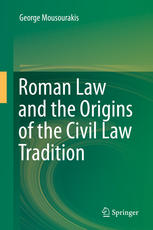

Most ebook files are in PDF format, so you can easily read them using various software such as Foxit Reader or directly on the Google Chrome browser.
Some ebook files are released by publishers in other formats such as .awz, .mobi, .epub, .fb2, etc. You may need to install specific software to read these formats on mobile/PC, such as Calibre.
Please read the tutorial at this link: https://ebookbell.com/faq
We offer FREE conversion to the popular formats you request; however, this may take some time. Therefore, right after payment, please email us, and we will try to provide the service as quickly as possible.
For some exceptional file formats or broken links (if any), please refrain from opening any disputes. Instead, email us first, and we will try to assist within a maximum of 6 hours.
EbookBell Team

4.0
26 reviewsThis unique publication offers a complete history of Roman law, from its early beginnings through to its resurgence in Europe where it was widely applied until the eighteenth century. Besides a detailed overview of the sources of Roman law, the book also includes sections on private and criminal law and procedure, with special attention given to those aspects of Roman law that have particular importance to today's lawyer. The last three chapters of the book offer an overview of the history of Roman law from the early Middle Ages to modern times and illustrate the way in which Roman law furnished the basis of contemporary civil law systems. In this part, special attention is given to the factors that warranted the revival and subsequent reception of Roman law as the ‘common law’ of Continental Europe. Combining the perspectives of legal history with those of social and political history, the book can be profitably read by students and scholars, as well as by general readers with an interest in ancient and early European legal history.
The civil law tradition is the oldest legal tradition in the world today, embracing many legal systems currently in force in Continental Europe, Latin America and other parts of the world. Despite the considerable differences in the substantive laws of civil law countries, a fundamental unity exists between them. The most obvious element of unity is the fact that the civil law systems are all derived from the same sources and their legal institutions are classified in accordance with a commonly accepted scheme existing prior to their own development, which they adopted and adapted at some stage in their history. Roman law is both in point of time and range of influence the first catalyst in the evolution of the civil law tradition.